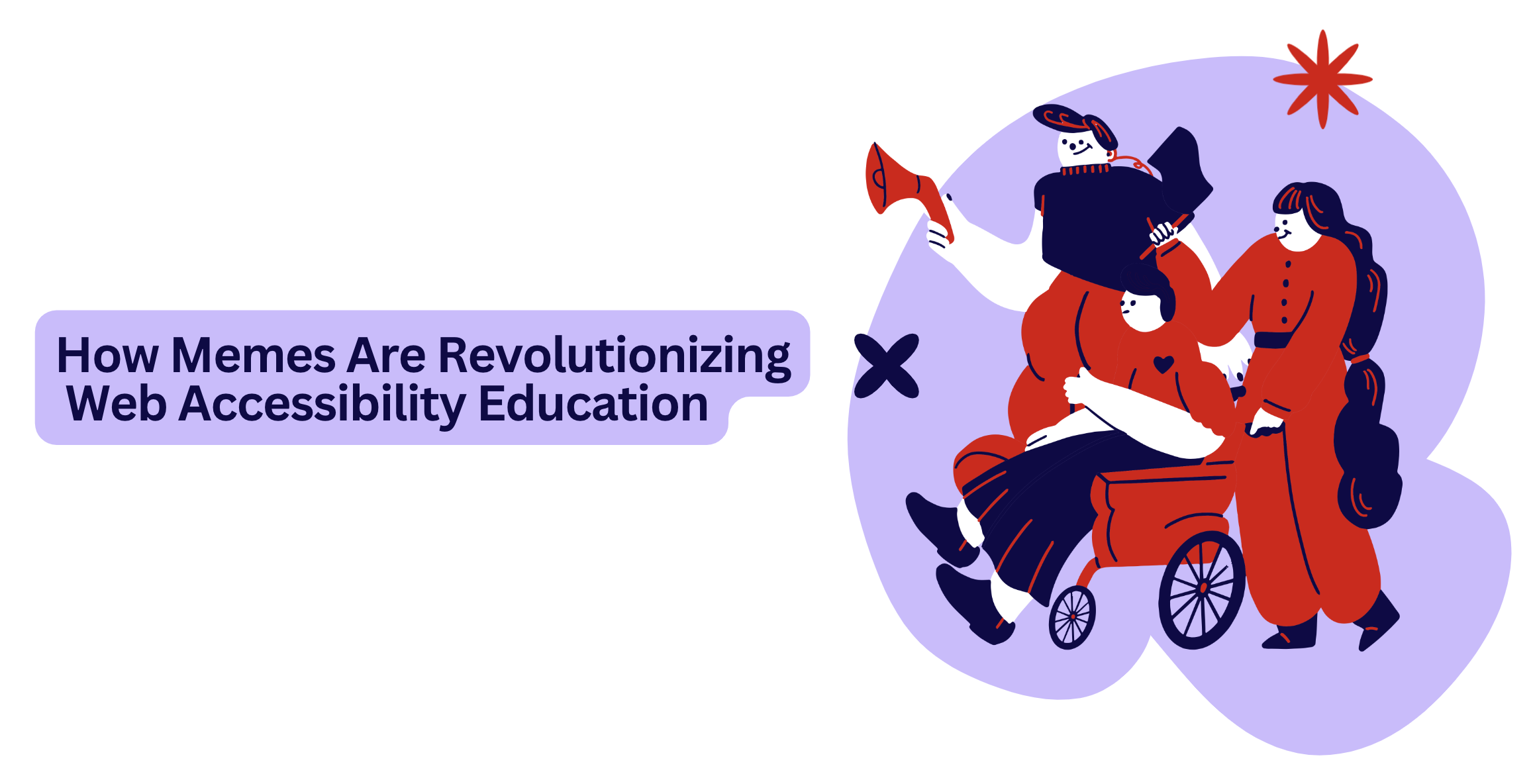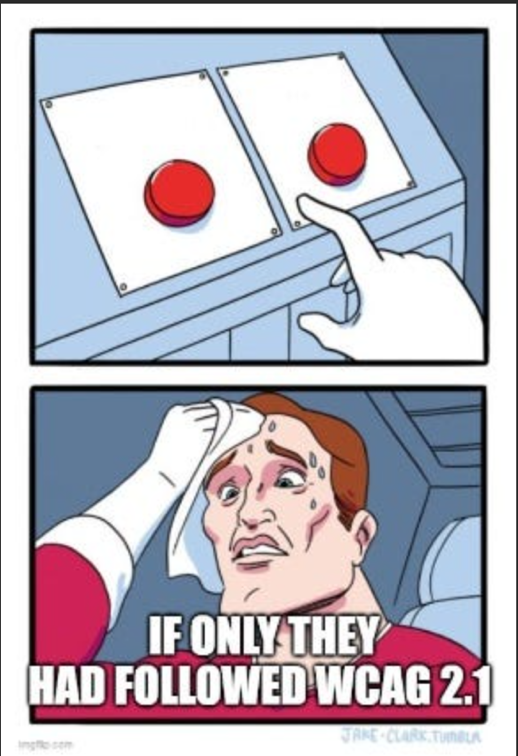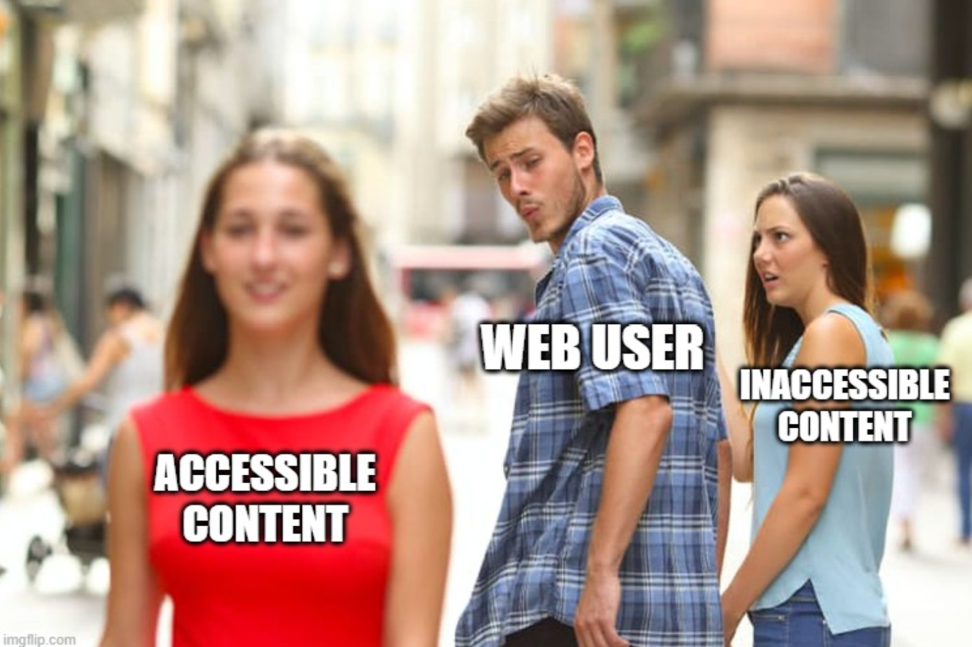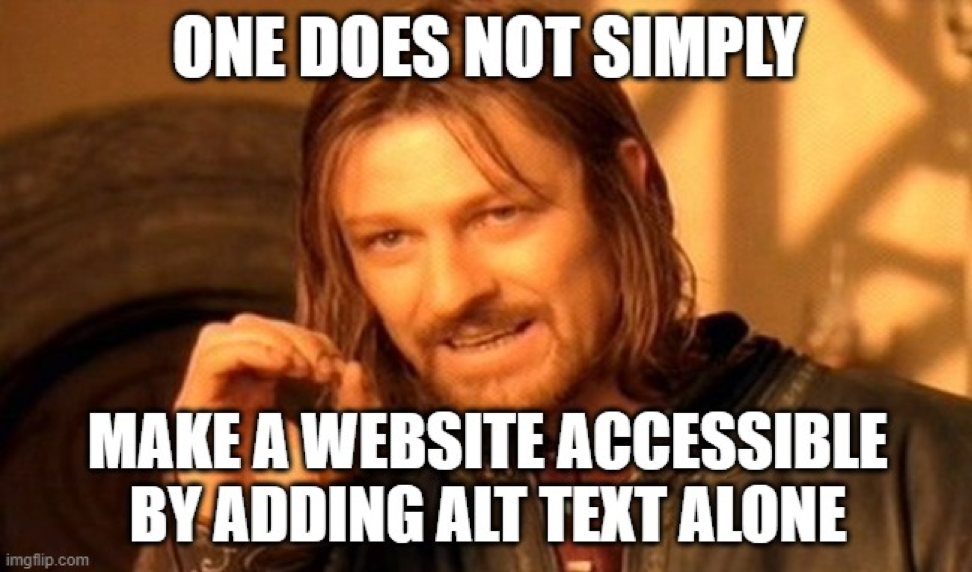How Meme-Style Educational Posts Can Enhance Web Accessibility Awareness

In the vast expanse of the internet, memes have emerged as a universal language of humor, shared across various platforms and easily understood by a wide demographic. What if we could harness this powerful tool to spread awareness about something as crucial as web accessibility?
Memes, known for their viral nature, can be the perfect medium to educate and engage audiences about the importance of making the web accessible to all.
Why Use Memes for Web Accessibility Education?
Memes are highly shareable and can quickly catch the attention of many people. They transform complex subjects into bite-sized, relatable content. When it comes to web accessibility, the goal is to foster understanding and empathy among web developers, designers, and everyday internet users. Memes can encapsulate major accessibility concepts in a way that is easy to grasp and fun to share, increasing the likelihood of widespread dissemination and impact.
The importance of web accessibility has been recognized globally, and there are established standards such as the Web Content Accessibility Guidelines (WCAG) provided by the World Wide Web Consortium (W3C). These guidelines explain how to make web content more accessible to people with disabilities.
Types of Accessibility Memes
- Contrast Fails: Memes showing texts with poor contrast that are hard to read, captioned with humorous frustrations or exaggerated outcomes to illustrate the importance of proper color contrast on websites.
- Alt Text Adventures: A series where famous movie scenes are described in bizarre or overly literal alt texts, highlighting the need for accurate and descriptive alt text for images.
- Keyboard Navigation Nightmares: Memes depicting the chaos of navigating a complex website using only a keyboard, emphasizing the need for straightforward keyboard accessibility paths.
- Captions Gone Wrong: Humorous takes on what happens when video captions don’t accurately reflect the audio, teaching the importance of correct captioning for auditory content.
Creating Engaging Accessibility Memes
To create effective accessibility memes, consider these tips:
- Stay Relevant: Use current and popular meme formats to ensure your content resonates with a broad audience.
- Be Respectful: While humor is a great tool, it’s vital to maintain respect and sensitivity towards those with disabilities.
- Educational Punch: Each meme should carry a clear message about a specific accessibility guideline or issue, providing educational value.
- Inclusive Language: Ensure that the language used in your memes is inclusive and free from ableist language or stereotypes. This promotes a positive and supportive environment for all users, including those with disabilities.
- Visual Clarity: Use clear, high-contrast visuals that are easy to understand at a glance. Avoid cluttered or overly complex designs that might be difficult to interpret, especially for users with visual impairments.
Examples of Effective Accessibility Memes
Meme Description: A dilemma scenario with a cartoon character sweating profusely while trying to choose between two identical options.
Alt Text: A comic-style meme with two panels. In the first panel, two identical red buttons are presented on white panels, with a hand hovering over them in indecision. The second panel shows the cartoon character with an anxious expression, sweating heavily, holding their forehead in stress. The caption reads, ‘IF ONLY THEY HAD FOLLOWED WCAG 2.1’, suggesting the dilemma could have been avoided with proper web accessibility practices.

Meme Description: A man in a light blue shirt, walking with his girlfriend, turns his head to ogle a woman in a red dress. The girlfriend, in blue jeans and a light blue top, looks on with surprise and anger.
Alt Text: A man walking with his partner turns his head to look at another person, symbolizing a web user’s shift from inaccessible to accessible content. The original partner, representing inaccessible content, is ignored in favor of the accessible option, which is more appealing and inclusive.
This meme conveys the message that accessible content is more attractive and necessary for users, emphasizing the importance of web accessibility in a humorous and relatable way.

Meme Description: A character from ‘The Lord of the Rings’ emphasizes the difficulty of an action.
Alt Text: A still of Boromir from ‘The Lord of the Rings’ with text saying, ‘One does not simply make a website accessible by adding alt text alone’.

The Impact of Memes on Web Accessibility Movements
By incorporating memes into our educational outreach, we can create a ripple effect. Every shared meme extends the reach of our message, building more allies in the fight for a more accessible internet. These memes not only educate but also foster a community that laughs, learns, and advocates together.
In the context of meme-style educational posts, it’s important to note that while they are a creative and engaging way to spread awareness, they should be part of a larger strategy that includes professional development, policy changes, and continuous monitoring of web accessibility standards. Establishing actionable steps for accessibility improvements comprises implementing web accessibility evaluation tools, promoting awareness and understanding of accessibility standards among the development team, and incorporating accessibility checkpoints in the development process to prevent the introduction of new accessibility issues.
For more detailed guidance on creating accessible memes, including how to write effective alt text, you can refer to resources like the guide by Veronica Lewis, an assistive technology advocate, which provides a crash course on alt text and meme-based considerations. Additionally, websites like Imgflip offer a platform to create and share accessible memes.
In conclusion, by using meme-style educational posts, we can transform how the digital world views web accessibility. These posts offer a unique strategy to break down barriers, one laugh and one share at a time, steering us towards a more inclusive internet.
If you liked this article, feel free to spread the love and share it! 😊
Leave a Reply